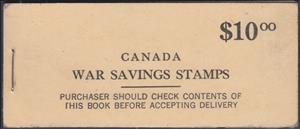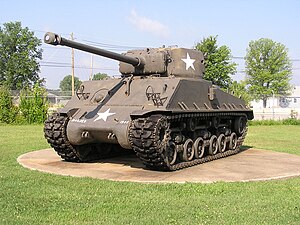Booklet: Canada War Savings Stamps (Canada 1940)
Canada War Savings Stamps (Canada 1940)
01 January (Canada ) within release War Savings goes into circulation Booklet Canada War Savings Stamps face value 10 Canadian dollar
Booklet is square format.
Booklet containing five panes of 8 x 25c stamps Four-line English inscription on the front cover and four-line French inscription on the back coverAlso in the issue War Savings:
- Stamp - Anti-aircraft gun face value 25;
- Stamp - Bomber face value 25;
- Stamp - Destroyer face value 25;
- Stamp - Numeral face value 25;
- Stamp - Nurses face value 25;
- Stamp - Pilots face value 25;
- Stamp - Sailor face value 25;
- Stamp - Soldier face value 25;
- Stamp - Spitfire face value 25;
- Stamp - Tank face value 25;
- Booklet Pane - War Savings - booklet pane face value 8*25;
- Booklet - Canada War Savings Stamps face value 10;
- Booklet - Canada War Savings Stamps face value 10;
- Booklet - Canada War Savings Stamps face value 10;
- Stamp - Numeral face value 25;
- Booklet Pane - Numeral face value 8*25;
- Booklet Pane - Spitfire face value 8*25;
|
Data entry completed
50%
|
|
|---|---|
| Booklet Canada War Savings Stamps in digits | |
| Country: | Canada |
| Date: | 1940-01-01 |
| Emission: | Savings Stamps |
| Format: | Booklet |
| Face Value: | 10 Canadian dollar |
Booklet Canada War Savings Stamps it reflects the thematic directions:
An aircraft (pl. aircraft) is a vehicle that is able to fly by gaining support from the air. It counters the force of gravity by using either static lift or the dynamic lift of an airfoil, or, in a few cases, direct downward thrust from its engines. Common examples of aircraft include airplanes, rotorcraft (including helicopters), airships (including blimps), gliders, paramotors, and hot air balloons.Part 1 (Definitions and Abbreviations) of Subchapter A of Chapter I of Title 14 of the U. S. Code of Federal Regulations states that aircraft "means a device that is used or intended to be used for flight in the air."
An army, ground force or land force is an armed force that fights primarily on land. In the broadest sense, it is the land-based military branch, service branch or armed service of a nation or country. It may also include aviation assets by possessing an army aviation component. Within a national military force, the word army may also mean a field army.
Aviation is the practical aspect or art of aeronautics, being the design, development, production, operation and use of aircraft, especially heavier than air aircraft. The word aviation was coined by French writer and former naval officer Gabriel La Landelle in 1863, from the verb avier (synonymous flying), itself derived from the Latin word avis ("bird") and the suffix -ation.
A military, also known collectively as an armed forces, are a heavily armed, highly organized force primarily intended for warfare. Militaries are typically authorized and maintained by a sovereign state, with their members identifiable by a distinct military uniform. They may consist of one or more military branches such as an army, navy, air force, space force, marines, or coast guard. The main task of a military is usually defined as defence of their state and its interests against external armed threats.
A ship is a large watercraft that travels the world's oceans and other sufficiently deep waterways, carrying passengers or goods, or in support of specialized missions, such as defense, research and fishing. Historically, a "ship" was a sailing vessel with at least three square-rigged masts and a full bowsprit. Ships are generally distinguished from boats, based on size, shape and load capacity.
A tank is an armoured fighting vehicle intended as a primary offensive weapon in front-line ground combat. Tank designs are a balance of heavy firepower, strong armour, and battlefield mobility provided by tracks and a powerful engine; their main armament is often mounted within a turret. They are a mainstay of modern 20th and 21st century ground forces and a key part of combined arms combat.






